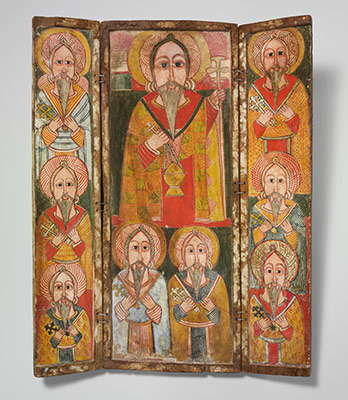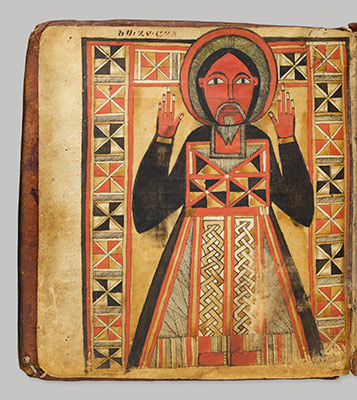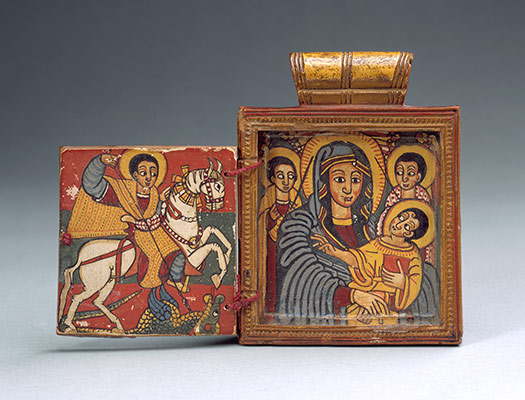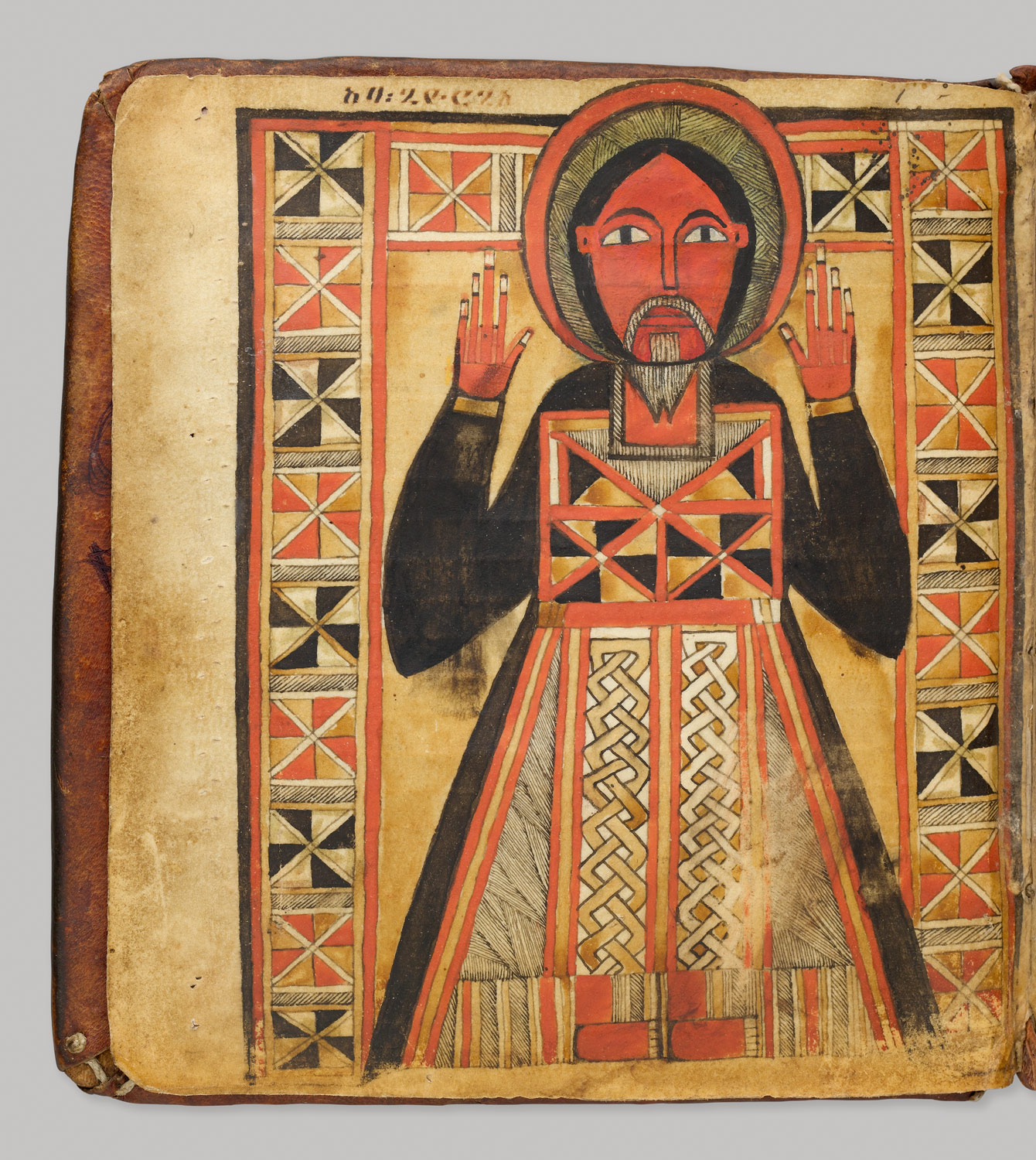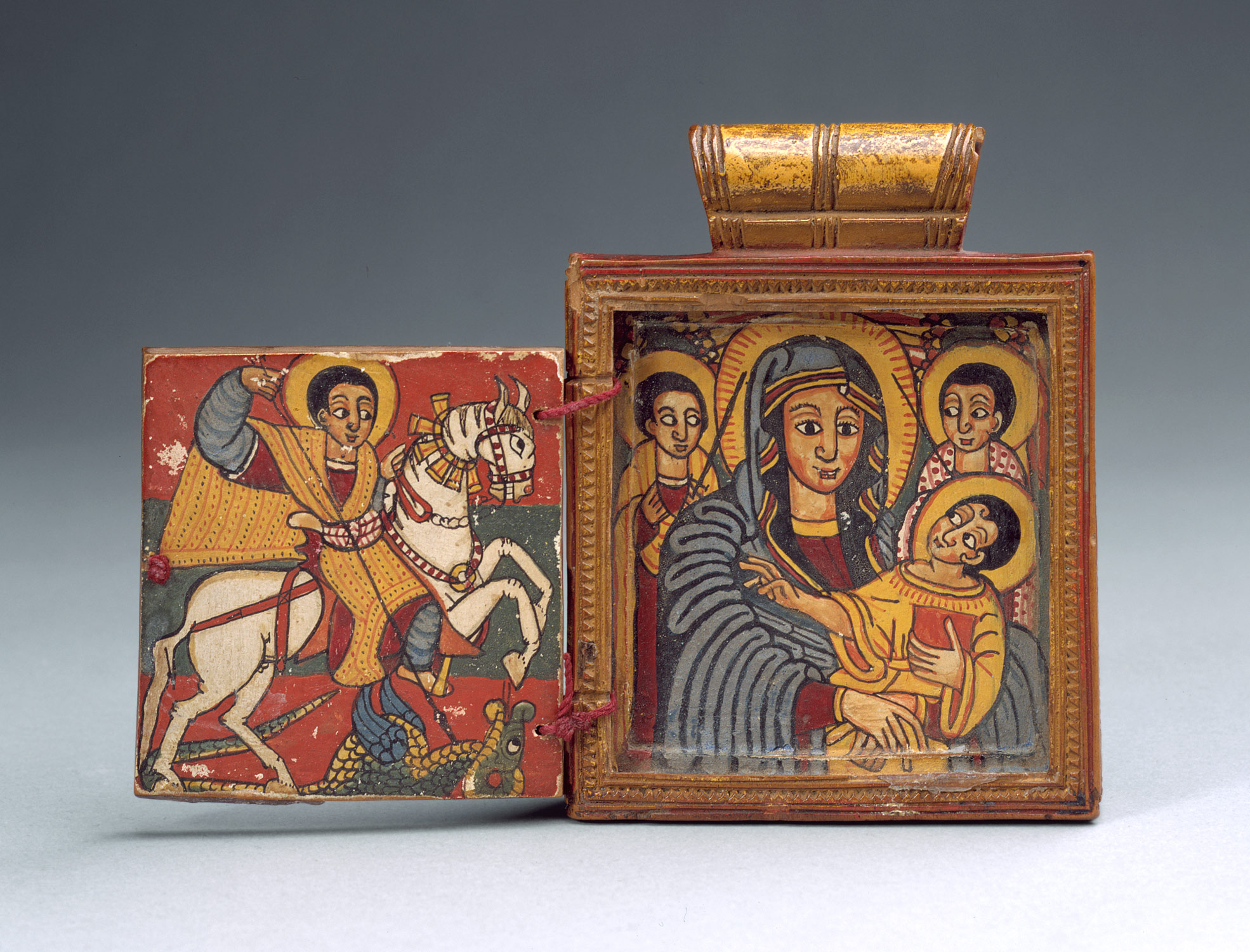Christian Ethiopia’s political and territorial decline, which began in the sixteenth century, continues throughout this period due in part to encroachment by pastoral peoples and emergent Muslim states such as Harar, in western Ethiopia. Efforts to unify the Ethiopian Church and restore security and prosperity to the kingdom produce a period of artistic florescence centered at the capital city of Gondar. Along the East African coast, first Portugal and then the sultanate of Oman gain control of Swahili economic centers; Mombasa, in modern-day Kenya, becomes an important state in the eighteenth century under Omani rule. The East African interior (present-day Rwanda, Burundi, Uganda, and western Kenya and Tanzania), witnesses the development of large states made powerful by trade and improved agriculture. At this time, emblems of leadership imported from the coast and Central Africa are adopted for use throughout the region.
Eastern Africa, 1600–1800 A.D.
Timeline
1600 A.D.
1650 A.D.
1650 A.D.
1700 A.D.
1700 A.D.
1750 A.D.
1750 A.D.
1800 A.D.
Overview
Key Events
-
17th century
Luba principles of leadership reach the Fipa plateau between Lakes Tanganyika and Rukwa in present-day western Tanzania. The introduction of Luba political culture, as well as millet and ironworking, is ascribed to the hero Ntatatkwa who, according to origin myths, migrated to the region from the Luba heartland in present-day Democratic Republic of the Congo.
-
17th–18th century
Architecture displaying Islamic influences is built of stone or fossilized coral in Swahili settlements such as Mogadishu, Mombasa, Lamu, Zanzibar, and Kilwa. Windows and doorways are typically framed with geometric and vegetal motifs carved in stone, coral, or wood. Around 1700, plaster begins to replace these as the preferred material for architectural decoration. Carved wood furniture, often inlaid with ivory, mother-of-pearl, or precious metals, are commissioned by rulers and wealthy merchants.
-
17th–mid-18th century
The kingdom of Ethiopia under Christian kings Fasiladas (r. 1632–67) and Yohannes (r. 1667–82) continues its period of decline. Schisms within the Ethiopian Church lead to rebellions that test these kings’ political authority, while sustained invasions by the pastoral Galla peoples (also called Oromo) weaken their territorial control. Emergent Muslim principalities in western Ethiopia and present-day Djibouti and Somalia compete with the kingdom for economic and political dominance. Iyasu I, who succeeds Yohannes in 1682, subdues rebellious factions within the church and initiates successful trade relations with European and Arabic states, but is ultimately unable to reclaim Ethiopia’s past stability and prosperity. Fasiladas establishes a new capital of Christian Ethiopia at Gondar, north of Lake Tana, in the first half of the seventeenth century, and under Iyasu I the city becomes a celebrated center of Christian art and scholarship. Several churches, including Debre Berham Selassie (“Mount of the Light of the Trinity”), are built during Iyasu’s reign and feature large-scale wall paintings. The distinctive Gondarine painting style, which incorporates new subjects and modes of representation, develops at this time.
-
1631
Portugal conquers the Swahili port of Mombasa in present-day Kenya.
-
mid-17th century
The sultanate of Harar, in western Ethiopia, is founded by ‘Ali ibn Dawud and becomes the most important center of Islamic learning and culture in the Horn of Africa. Throughout the eighteenth century, caravans from Harar are key factors in the spread and revitalization of Islam in southern Ethiopia.
-
mid-17th–19th century
The kingdom of Rwanda comes to prominence in the area between Lakes Victoria and Kivu, in the present-day countries of Rwanda and Burundi. Rwanda is a highly stratified, multiethnic society supported by agriculture and the flourishing trade that links the many lake-dwelling communities in this region. During the late seventeenth century, Rwanda expands its territorial control by integrating neighboring rulers into the kingdom as abiiru, hereditary guardians of the principles, rituals, and emblems of Rwandan royal power. Archaeological excavations of the tomb of King Cyirima Rujugira, who according to oral traditions died in either 1708 or 1768, have unearthed a wealth of grave objects associated with Rwandan rulership. Imported beads from India and Europe complement locally made items of pottery, iron, shell, bone, and rock crystal. Among the most significant of these objects are conical iron anvils similar to those found throughout the Luba kingdom at this time.
-
late 17th–18th century
With the decline of Portuguese influence along the East African coast, the sultanate of Oman (on the western end of the Arabian Peninsula) asserts political and economic dominance over the region. Mombasa becomes an important state under the Omani-derived Mazru‘i dynasty, while the southern coast, controlled by the al-Bu-Sa‘id dynasty, also enjoys a period of prosperity.
-
early 18th century
Disks made from the sawed-off ends of conus shells (conus litteratus) become widespread emblems of leadership in what is today Tanzania and southern Kenya. These forms are also employed as chiefly paraphernalia among cultures throughout Central Africa, including the Chokwe, Luba, and Tabwa peoples.
-
late 18th century
Ivory hunters, possibly of Yao origin, settle along the western shores of Lake Malawi, introducing Swahili customs from the coastal region of present-day Tanzania and Mozambique. Subsequently, turbans of dark blue or black cloth are adopted throughout the region as chiefly headgear.
Citation
“Eastern Africa, 1600–1800 A.D.” In Heilbrunn Timeline of Art History. New York: The Metropolitan Museum of Art, 2000–. http://www.metmuseum.org/toah/ht/?period=09®ion=afa (October 2003)
